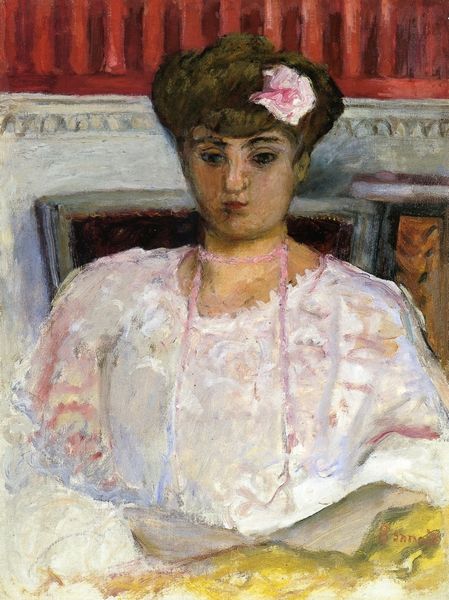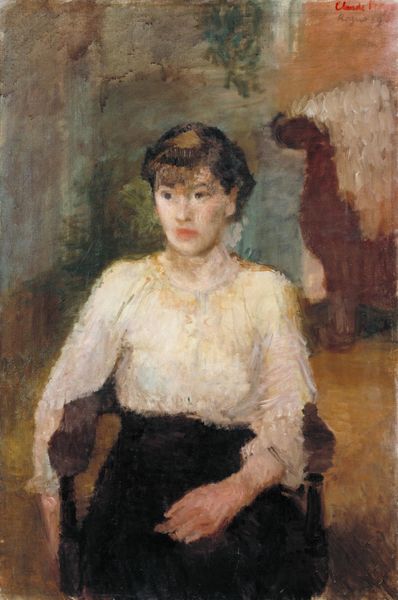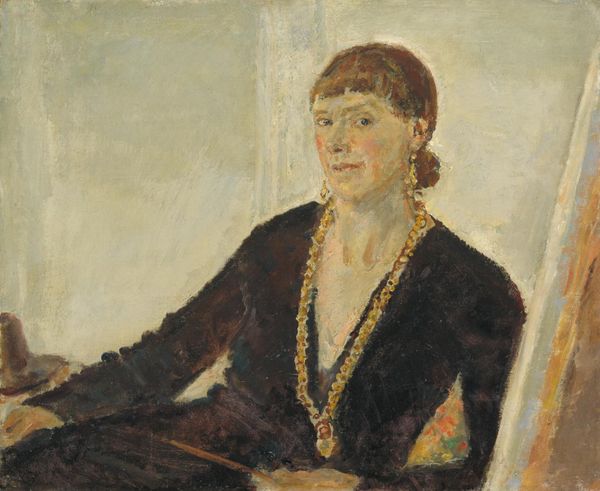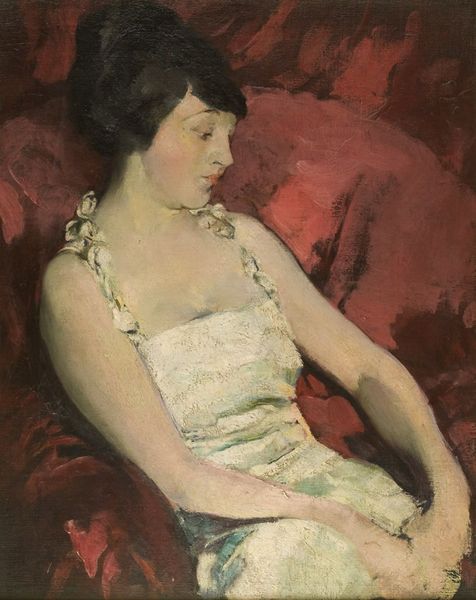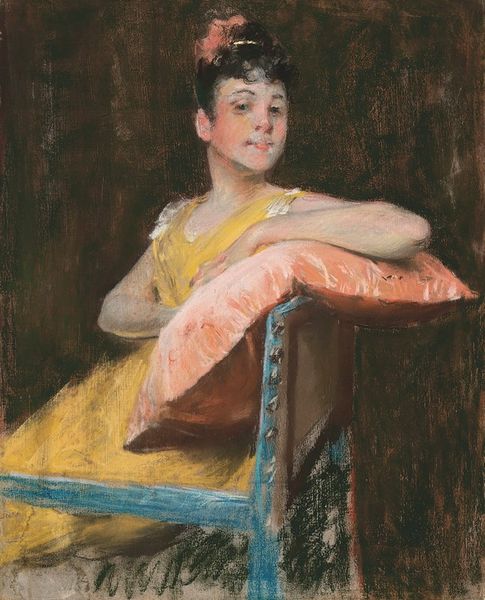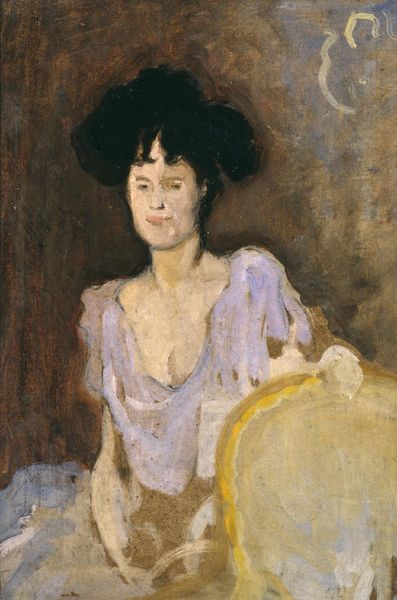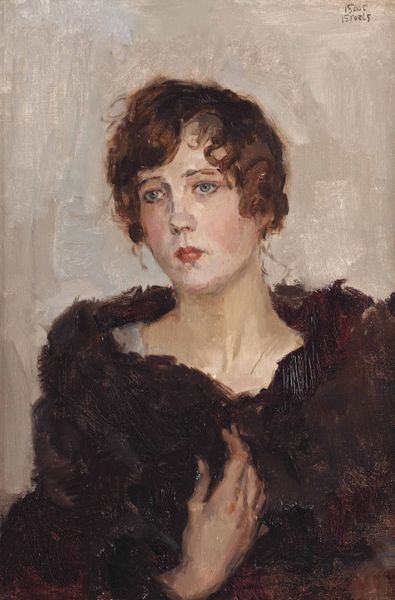
painting, oil-paint
#
portrait
#
painting
#
oil-paint
#
oil painting
#
intimism
Dimensions: 61 x 55.8 cm
Copyright: Public domain
Curator: Here, we see Pierre Bonnard's "Portrait of a girl, Mademoiselle Renee Terrasse," an oil on canvas painted in 1916. It currently resides in a private collection. My first impression is one of quiet dignity. What about you? Editor: I'm struck by the airlessness of the scene, almost claustrophobic. The colors, though muted, feel heavy, reflecting perhaps the socio-political tension brewing in Europe at the time. Bonnard painted this during World War I, after all. Curator: It is intimate in scale and subject. Looking at Mademoiselle Terrasse, one is drawn into her expression – an inner stillness. The pearls around her neck are interesting, too. They function almost like a protective amulet. Can we see them as more than mere adornment? Perhaps they carry some ancestral significance for the sitter? Editor: Her attire, while elegant, also strikes me as constricting – a high neckline and relatively modest silhouette. In this historical moment, expectations for women, particularly those of a certain social class, were incredibly restrictive, even violent. Does this portrait serve to re-inscribe those limitations or attempt to subvert them? Curator: It's fascinating how symbols evolve across time and context. Take, for instance, the floral motif in her hair, seemingly delicate, but possibly representing resilience, and hope amidst turmoil, recalling spring’s re-emergence even during the coldest winters. Editor: That is insightful, yet the question lingers of how agency manifests, especially when depicting female subjects by male artists in that period. Were such nuanced readings even intended by Bonnard? Curator: Intentionality is always slippery, yet images accrue layers of meaning as time passes and cultures evolve. A modern reading brings new perspectives. Editor: Exactly! And engaging with these paintings forces us to reckon with historical realities and the continuing presence of these forces in the present day. Curator: Yes, understanding these historical contexts lets us really grasp the emotional complexity held in these paintings. Editor: It makes for a much more potent conversation than aesthetic pleasure alone, don't you think? It forces us to question how we understand femininity, class, and representation itself.
Comments
No comments
Be the first to comment and join the conversation on the ultimate creative platform.
